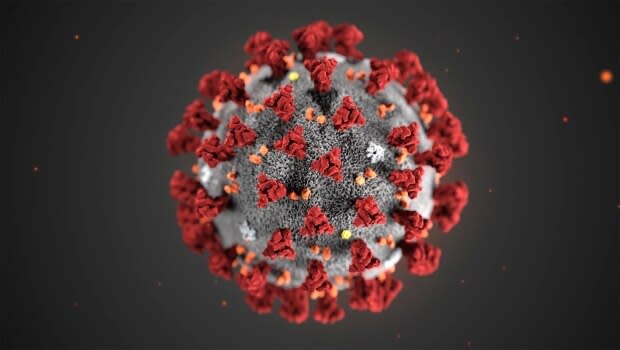2 strains of COVID-19 virus? Scientists track mutations for insights
Viruses naturally evolve by gathering mutations, gaining the ability to pass more easily between people or becoming deadlier. That's why scientists are watching closely to track how COVID-19 changes.
Scientific sleuths look at the genetic sequence of a virus like a fingerprint at a crime scene. They're focused on finding sudden changes in the sequence over time — a mutation.
This week, Chinese researchers analyzed 103 publicly available genomes from infected patients in several countries.
The results suggest the virus isn't mutating into a more dangerous version. In fact, it's possible newer mutations are making the virus less deadly.
The results from the team at Peking University point to two strains: a more aggressive one that originated with the first cases in Wuhan, China and another, less aggressive type.
About 70 per cent of the patient samples were from the more aggressive type of SARS-Co-V, the virus that causes COVID-19.

After early January, the frequency of the newer strain started to drop. Researchers speculated that human interventions, such as large-scale quarantine efforts in China, resulted in the newer strain spreading less.
"This work provides new insights into the factors driving the evolution of the SARS-CoV-2 and its pattern of spread through the human population," researchers concluded.
Human to human spread
Matthew Miller studies viruses, and immune responses to them, at McMaster University in Hamilton, Ont. He wasn't involved in the study, which he said might offer good news for illnesses.
"This is why the sequencing is so important," Miller said. "On one hand, it can tell us exactly what strain is causing the infection and secondly it can help us to disentangle how the case fatality rate depends on the virus itself versus the country or location in which the infections are occurring."
Virologist Stephen Griffin is an associate professor at the University of Leeds in the U.K. who commented on the study.
"It is usually the case that when RNA viruses first cross species barriers into humans they aren't particularly well adapted to their new host (us!)," Griffin wrote.
"Thus, they usually undergo some changes allowing them to adapt and become better able to replicate within, and spread from human to human."
Griffin cautioned that the Chinese study hasn't tested if the virus could replicate, or make copies of itself in human cells or animals, so it isn't possible to say whether this is what's happened to the epidemic virus.

 Yahoo Movies
Yahoo Movies 